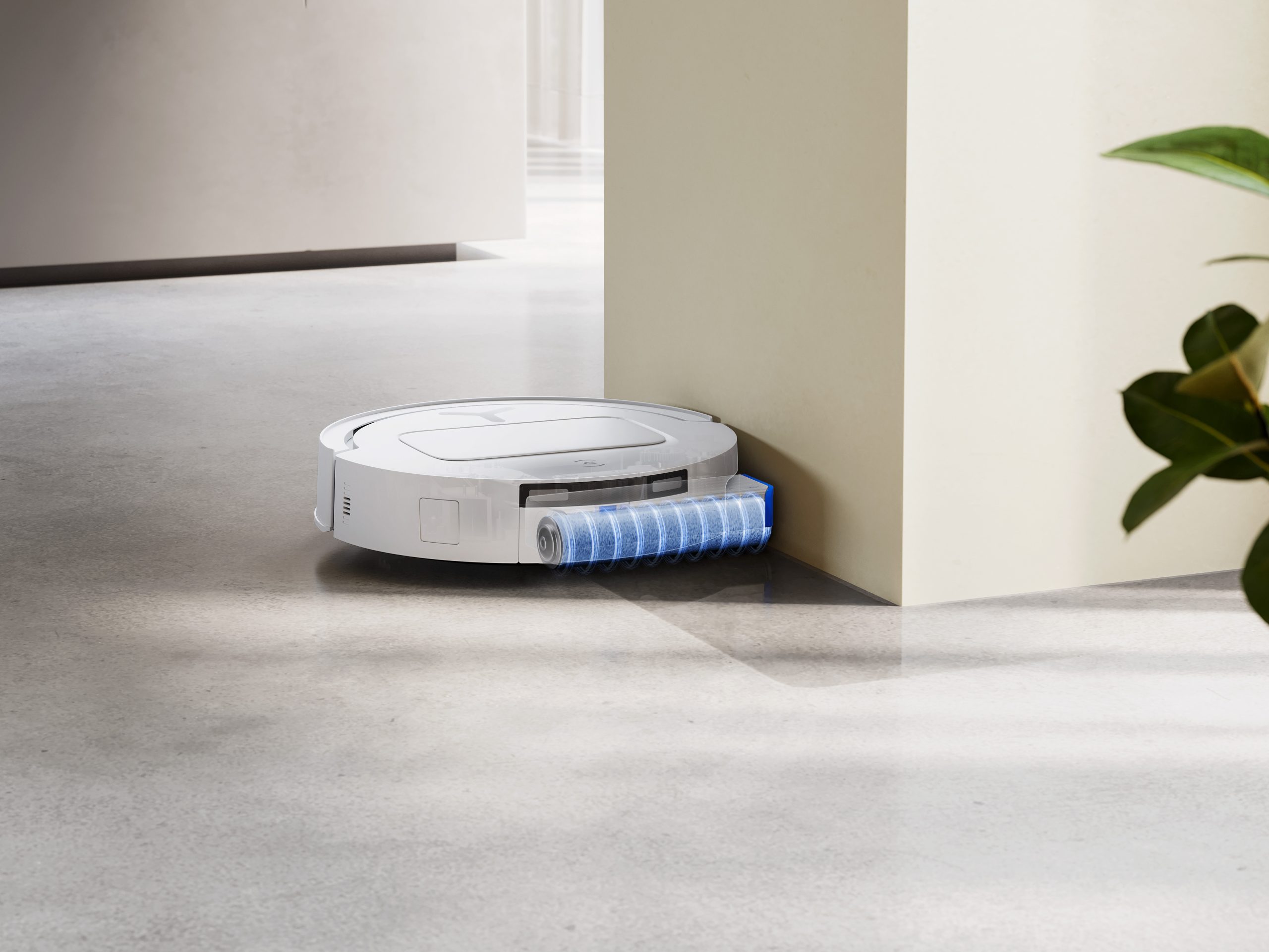Health Is Wealth When Tariffs Are Denting Profit Forecasts
President Donald Trump’s imposition of tariffs on trading partners have moved analysts to reduce forecasts for U.S. companies. Many stocks look vulnerable to declines, while some seem relatively immune.
Since the start of the year, analysts’ expectations for aggregate first-quarter sales of S&P 500 component companies have dropped about 0.4%, according to FactSet. The hundreds of billions of dollars worth of imports from China, Mexico, and Canada the Trump administration is placing tariffs on, including metals and basic materials for retail and food sellers, will raise costs for U.S. companies. That will force them to lift prices, reducing the number of goods and services they’ll sell to consumers and businesses.
This outlook has pressured first-quarter earnings estimates by 3.8%. Companies will cut back on marketing and perhaps labour, but many have substantial fixed expenses that can’t easily be reduced, such as depreciation and interest to lenders. Profit margins will drop in the face of lower revenue, thus weighing on profit estimates. The estimates dropped mildly in January, and then picked up steam in February, just after the initial tariff announcements.
“We are starting to see the first instances of analysts cutting numbers on tariff impacts,” writes Citi strategist Scott Chronert.
The reductions aren’t concentrated in one sector; they’re widespread, a concrete indication that the downward revisions are partly related to tariffs, which affect many sectors. The percentage of all analyst earnings-estimate revisions in March for S&P 500 companies that have been downward this year has been 60.1%, according to Citi, worse than the historical average of 53.5% for March.
The consumer-discretionary sector has seen just over 62% of March revisions to be lower, almost 10 percentage points worse than the historical average. The aggregate first-quarter earnings expectation for all consumer-discretionary companies in the S&P 500 has dropped 11% since the start of the year.
That could hurt the stocks going forward, even though the Consumer Discretionary Select Sector SPDR exchange-traded fund has already dropped 11% for the year. The declines have been led by Tesla and Amazon.com , which account for trillions of dollars of market value and comprise a large portion of the fund. The average name in the fund is down about 4% this year, so there could easily be more downside.
That’s especially true because another slew of downward earnings revisions look likely. Analysts have barely changed their full-year 2025 sales projections for the consumer-discretionary sector, and have lowered full-year earnings by only 2%, even though they’ve more dramatically reduced first-quarter forecasts. The current expectation calls for a sharp increase in quarterly sales and earnings from the first quarter through the rest of the year, but that’s unrealistic, assuming tariffs remain in place for the rest of the year.
“The relative estimate achievability of the consumer discretionary earnings are below average,” Trivariate Research’s Adam Parker wrote in a report.
That makes these stocks look still too expensive—and vulnerable to declines. The consumer-discretionary ETF trades at 21.2 times expected earnings for this year, but if those expectations tumble as much as they have for the first quarter, then the fund’s current price/earnings multiple looks closer to 25 times. That’s too high, given that it’s where the multiple was before markets began reflecting ongoing risk to earnings from tariffs and any continued economic consequences. So, another drop in earnings estimates would drag these consumer stocks down even further.
Industrials are in a similar position. Many of them make equipment and machines that would become more costly to import. The sector has seen about two thirds of March earnings revisions move downward, about 13 percentage points worse that the historical average. Analysts have lowered first-quarter-earnings estimates by 6%, but only 3% for the full year, suggesting that more tariff-related downward revisions are likely for the rest of the year.
That would weigh on the stocks. The Industrial Select Sector SPDR ETF is about flat for the year but would look more expensive than it is today if earnings estimates drop more. The stocks face a high probability of downside from here.
The stocks to own are the “defensive” ones, those that are unlikely to see much tariff-related earnings impact, namely healthcare. Demand for drugs and insurance is much sturdier versus less essential goods and services when consumers have less money to spend. The Health Care Select Sector SPDR ETF has produced a 6% gain this year.
That’s supported by earnings trends that are just fine. First-quarter earnings estimates have even ticked slightly higher this year. These stocks should remain relatively strong as long as analysts continue to forecast stable, albeit mild, sales and earnings growth for the coming few years.
“This leads us to recommend healthcare and disfavour consumer discretionary,” Parker writes.
 Copyright 2020, Dow Jones & Company, Inc. All Rights Reserved Worldwide. LEARN MORE
Copyright 2020, Dow Jones & Company, Inc. All Rights Reserved Worldwide. LEARN MORE
Records keep falling in 2025 as harbourfront, beachfront and blue-chip estates crowd the top of the market.
A divide has opened in the tech job market between those with artificial-intelligence skills and everyone else.
JPMorgan Chase has a ‘strong bias’ against adding staff, while Walmart is keeping its head count flat. Major employers are in a new, ultra lean era.
It’s the corporate gamble of the moment: Can you run a company, increasing sales and juicing profits, without adding people?
American employers are increasingly making the calculation that they can keep the size of their teams flat—or shrink through layoffs—without harming their businesses.
Part of that thinking is the belief that artificial intelligence will be used to pick up some of the slack and automate more processes. Companies are also hesitant to make any moves in an economy many still describe as uncertain.
JPMorgan Chase’s chief financial officer told investors recently that the bank now has a “very strong bias against having the reflective response” to hire more people for any given need. Aerospace and defense company RTX boasted last week that its sales rose even without adding employees.
Goldman Sachs , meanwhile, sent a memo to staffers this month saying the firm “will constrain head count growth through the end of the year” and reduce roles that could be more efficient with AI. Walmart , the nation’s largest private employer, also said it plans to keep its head count roughly flat over the next three years, even as its sales grow.
“If people are getting more productive, you don’t need to hire more people,” Brian Chesky , Airbnb’s chief executive, said in an interview. “I see a lot of companies pre-emptively holding the line, forecasting and hoping that they can have smaller workforces.”
Airbnb employs around 7,000 people, and Chesky says he doesn’t expect that number to grow much over the next year. With the help of AI, he said he hopes that “the team we already have can get considerably more work done.”
Many companies seem intent on embracing a new, ultralean model of staffing, one where more roles are kept unfilled and hiring is treated as a last resort. At Intuit , every time a job comes open, managers are pushed to justify why they need to backfill it, said Sandeep Aujla , the company’s chief financial officer. The new rigor around hiring helps combat corporate bloat.
“That typical behavior that settles in—and we’re all guilty of it—is, historically, if someone leaves, if Jane Doe leaves, I’ve got to backfill Jane,” Aujla said in an interview. Now, when someone quits, the company asks: “Is there an opportunity for us to rethink how we staff?”
Intuit has chosen not to replace certain roles in its finance, legal and customer-support functions, he said. In its last fiscal year, the company’s revenue rose 16% even as its head count stayed flat, and it is planning only modest hiring in the current year.
The desire to avoid hiring or filling jobs reflects a growing push among executives to see a return on their AI spending. On earnings calls, mentions of ROI and AI investments are increasing, according to an analysis by AlphaSense, reflecting heightened interest from analysts and investors that companies make good on the millions they are pouring into AI.
Many executives hope that software coding assistants and armies of digital agents will keep improving—even if the current results still at times leave something to be desired.
The widespread caution in hiring now is frustrating job seekers and leading many employees within organizations to feel stuck in place, unable to ascend or take on new roles, workers and bosses say.
Inside many large companies, HR chiefs also say it is becoming increasingly difficult to predict just how many employees will be needed as technology takes on more of the work.
Some employers seem to think that fewer employees will actually improve operations.
Meta Platforms this past week said it is cutting 600 jobs in its AI division, a move some leaders hailed as a way to cut down on bureaucracy.
“By reducing the size of our team, fewer conversations will be required to make a decision, and each person will be more load-bearing and have more scope and impact,” Alexandr Wang , Meta’s chief AI officer, wrote in a memo to staff seen by The Wall Street Journal.
Though layoffs haven’t been widespread through the economy, some companies are making cuts. Target on Thursday said it would cut about 1,000 corporate employees, and close another 800 open positions, totaling around 8% of its corporate workforce. Michael Fiddelke , Target’s incoming CEO, said in a memo sent to staff that too “many layers and overlapping work have slowed decisions, making it harder to bring ideas to life.”
A range of other employers, from the electric-truck maker Rivian to cable and broadband provider Charter Communications , have announced their own staff cuts in recent weeks, too.
Operating with fewer people can still pose risks for companies by straining existing staffers or hurting efforts to develop future leaders, executives and economists say. “It’s a bit of a double-edged sword,” said Matthew Martin , senior U.S. economist at Oxford Economics. “You want to keep your head count costs down now—but you also have to have an eye on the future.”
Australia’s market is on the move again, and not always where you’d expect. We’ve found the surprise suburbs where prices are climbing fastest.
From mud baths to herbal massages, Fiji’s heat rituals turned one winter escape into a soul-deep reset.
























